| Kenya Uganda Railways & Harbours |
| A rare and historic series of photographs taken in the 1930s and 40s. |
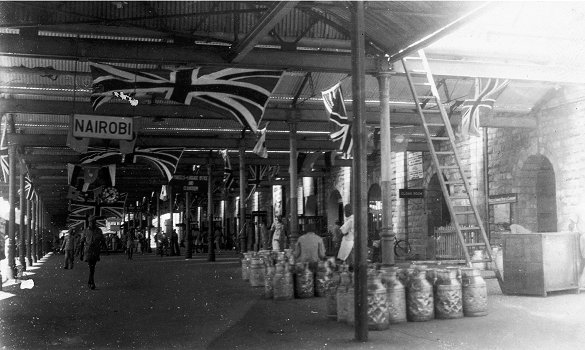 |
| Nairobi Railway Station during the 50th Anniversary Celebrations in 1946 - PHOTO Andrew Templer |
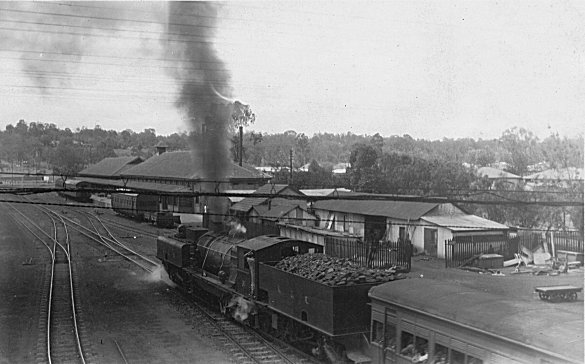 |
| KUR No 54 Nandi departing with a passenger train - PHOTO Andrew Templer |
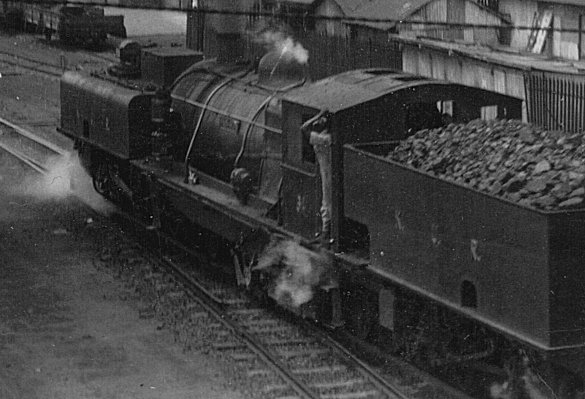 |
| Close-up of Class EC1 No 54 which was to become EAR&H 50 Class 5008 - PHOTO Andrew Templer |
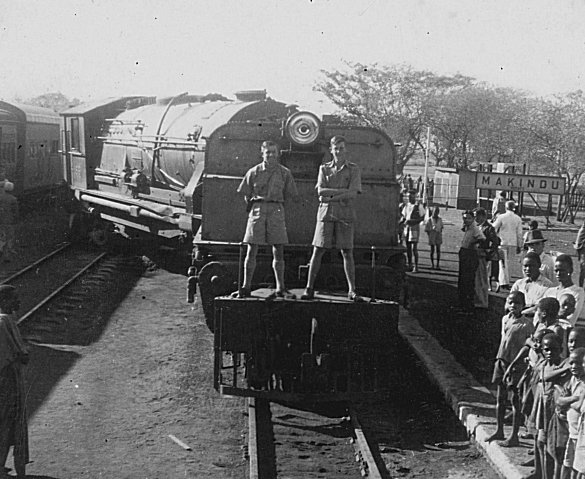 |
| Class EC3 Budama No 86 comes to grief at Makindu - PHOTO Andrew Templer |
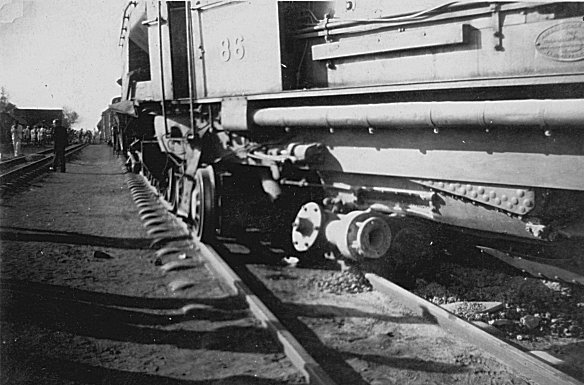 |
| No 86 showing the severed steam pipe - PHOTO Andrew Templer |
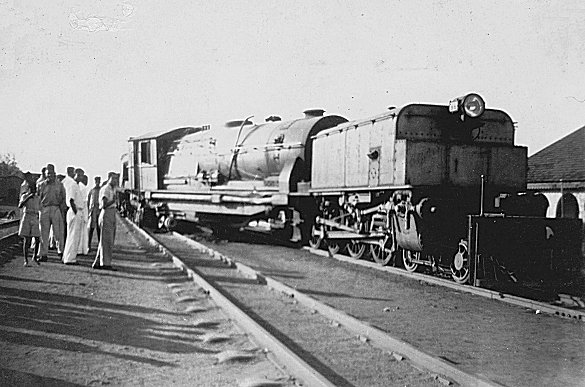 |
| Front view of No 86 - PHOTO Andrew Templer |
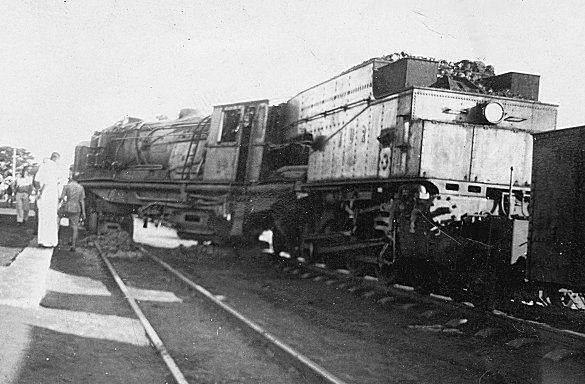 |
| Rear view of No 86 - PHOTO Andrew Templer |
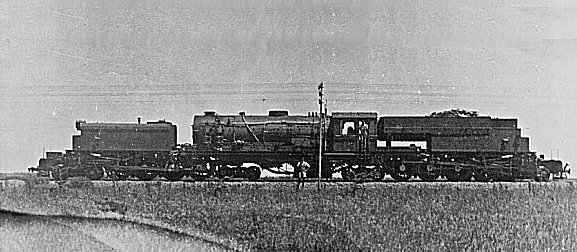 |
| Class EC3. At the summit of a steep gradient these locos could suffer from a sudden drop in water level when the gradient suddenly changed. This could expose the crown sheet and cause the loco to blow a lead plug. These locos were later to become the EAR&H 57 Class - PHOTO Andrew Templer |
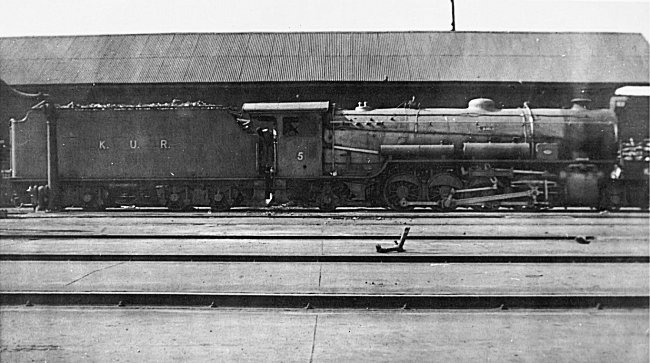 |
| Designed ab initio to burn oil the EA Class were introduced in 1928 and converted to coal burning in 1929. However all the coal burning KUR Mikados like No 5 (above) were later to be converted back to oil burning when the EAR&H went over to oil in the late 40s. No 5 then became EAR&H 28 Class 2805 Lamu. Initially allocated to Mail Trains between Mombasa and Makindu, after 1932, when the Mombasa Nairobi line was completed in 80lb rail, these locos were able to run over the whole section between Mombasa and Nairobi. The 28 Class survived to around 1960 - PHOTO Andrew Templer |
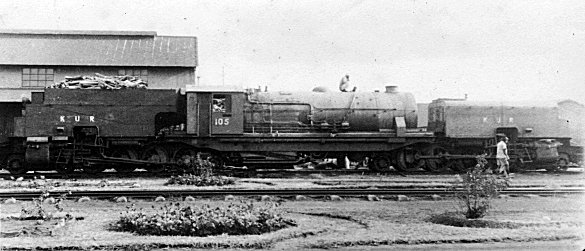 |
| No 105 with a tender full of timber - PHOTO Andrew Templer |
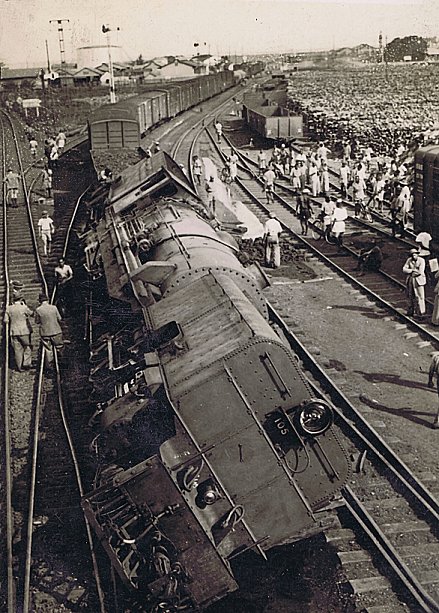 |
| Derailment (above and sequence below ) KUR Class EC4 No 105. The EC4s were to become EAR&H 54 Class and this one became 5406. Unlike the KUR EA Class shown above, these locomotives were introduced as coal burners as can clearly be seen. The incident occurred about 1946 - PHOTO Andrew Templer |
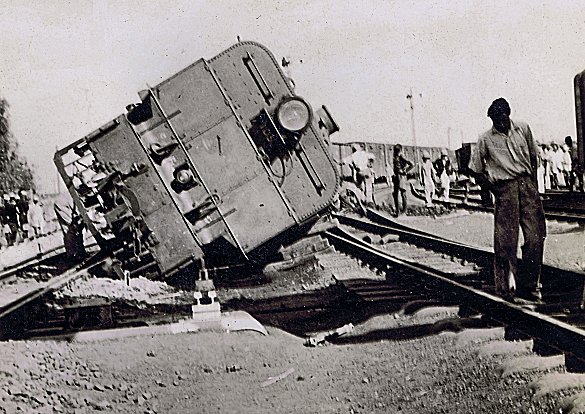 |
| The EC4 Class arrived in East Africa in 1944 and were limited to 80lb track which means this location is between Mombasa and Nairobi - PHOTO Andrew Templer |
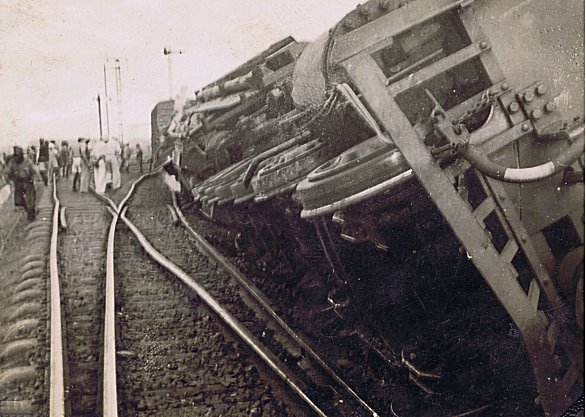 |
| Rail damage under the front engine of # 105. Designed by the War Department, these locomotives were later often rostered on faster passenger schedules for which they were not really suited and this meant they were difficult to maintain. They had all been withdrawn by 1960 - PHOTO Andrew Templer |
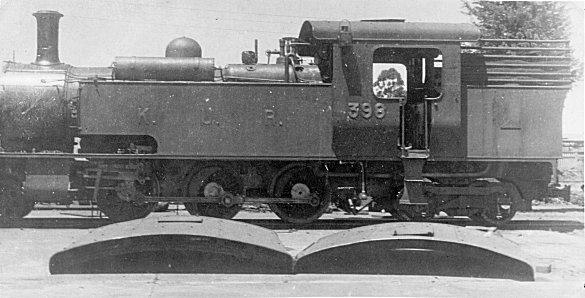 |
| 2-6-4T tank locomotive No 398 supplied by Naysmith Wilson in 1913-14 as a Class MS, in 1929 they were modified to become the Class EE and ultimately to the EAR&H 10 Class. Similar to the earlier 2-6-2T Class S, despite their increased fuel and water capacity, these loco were to end up on the Kisumu-Butere line where the consist included an auxiliary water tender - PHOTO Andrew Templer |
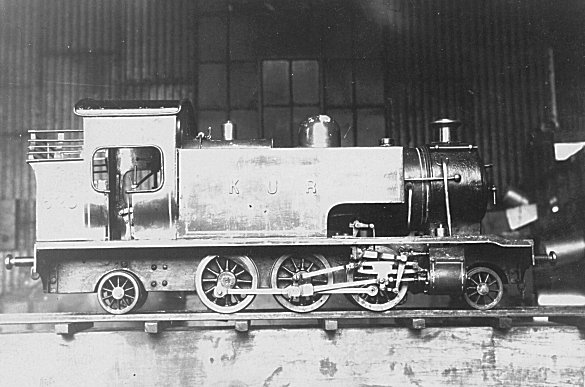 |
| Possibly a model of one of the three 2-6-2T Class S tank built by Naysmith Wilson in 1913 for shunting in Mombasa and, like many Kilindini based engines it would have been converted to oil burning around 1920 - PHOTO Andrew Templer |
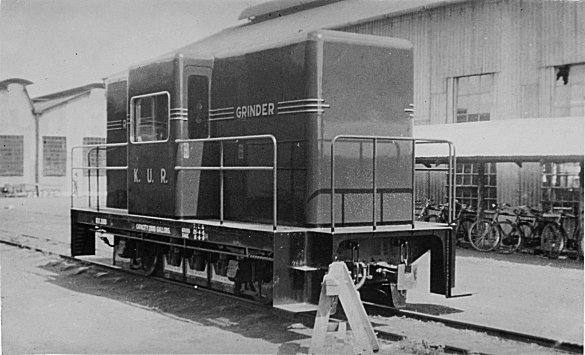 |
| Anderson Rail Grinder - PHOTO Andrew Templer |